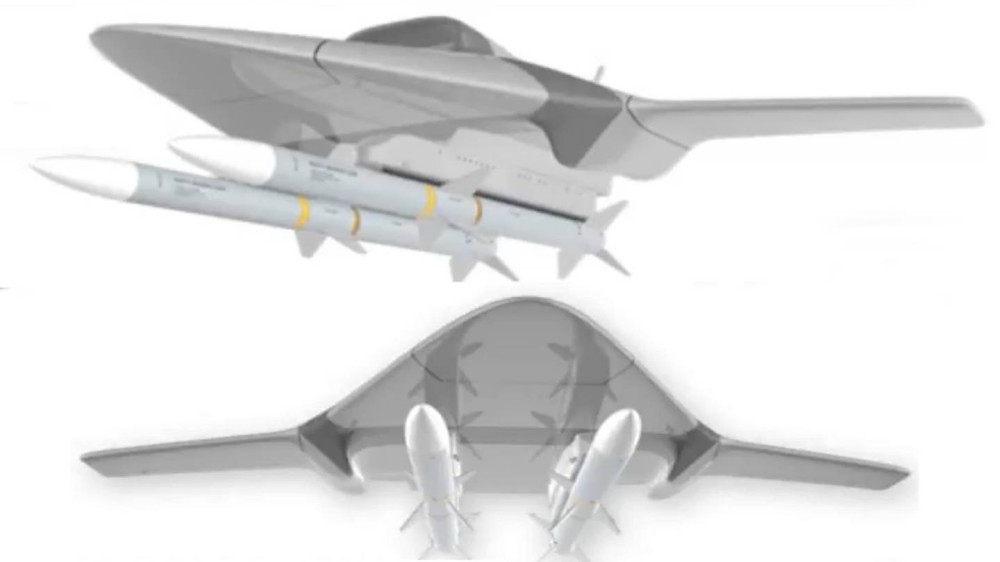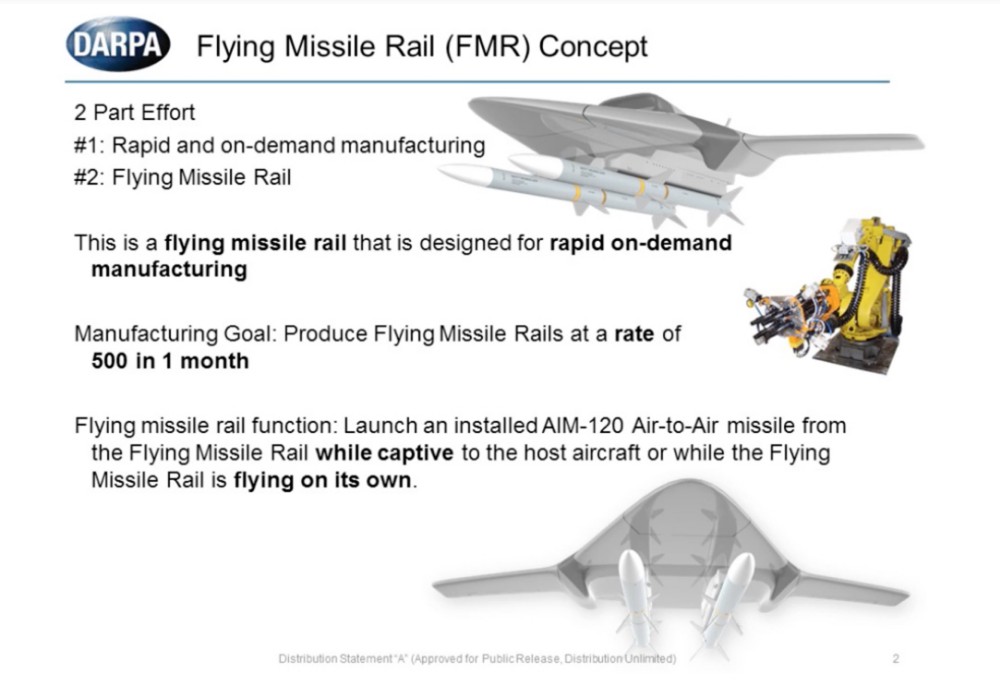In a video posted last week on YouTube, Air Force Lt. Col. Jimmy Jones, a program manager with the Strategic Technology Office, challenged industry with the Flying Missile Rail (FMR) concept. DARPA’s vision is an armed drone that would be carried on the missile rails of Air Force F-16s and Navy and Marine Corps F/A-18. The Flying Missile Rail would fly at 0.9 Mach (690 miles an hour) for up to 20 minutes.
This will be an air combat drone. According to Jones, it would carry at least one and preferably two AIM-120 AMRAAM air-to-air missiles that can strike beyond visual range. FMR would be able to launch its AMRAAMs while on a fighter’s wing or in flight by itself.
A key requirement for the program is what Jones calls a “factory in a can.” The idea is that the entire manufacturing process—plus materials, electronics, and everything else necessary—must be able to fit in several shipping containers. Any manufacturing process is allowed, but DARPA suggests highly automated advanced manufacturing processes such as computer numerical control (CNC) machining or 3D printing.
The point is that DARPA wants a single factory that can churn out 500 FMRs a month. That may be a lot of drones, but think of the number as part of the challenge. DARPA wants manufacturers to really think big.
Another advantage to the “factory in a can” strategy is that the services could take ownership of the factory and can choose how many drones to build. For example, the Air Force would not need two years and hours of negotiations to purchase an extra 50 drones; a “factory in a can” can produce that many in four days. It would also not have to pay to keep and maintain fleets of hundreds of drones on hand. Every year the services would fire up the factories and crank out a handful of drones to make sure everything still works, then shut down the machinery and walk away.
FMR’s ability to fly for 20 minutes at 690 miles an hour will effectively give U.S. fourth-generation fighters such as the F-16 and F/A-18 a buffer area where they can launch their missiles but the enemy cannot. This is particularly important as the AIM-120 AMRAAM air-to-air missile is now 30 years old and increasingly being overtaken in capabilities, particularly range, by the air-to-air missiles of potential adversaries.
In a combat situation with U.S. and enemy fighters flying towards one another, FMR gives the U.S. pilots a choice. If the enemy is flying better planes with better missiles, the U.S. fighter can launch a FMR and turn tail, staying out of the enemy’s engagement envelope and letting the drone do the fighting. If the enemy is flying inferior fighters, the U.S. fighter can launch the AMRAAMs hanging off FMR’s rails and save the drone for a more dangerous engagement.
Sources: YouTube; Popular Mechanics


